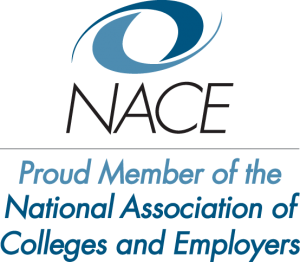When people throw out the terms “workplace culture” or “organizational culture,” eyes often glaze over. Why? Because although everyone agrees that culture is critically important, nobody agrees on what precisely culture means. Is a workplace culture described by how people dress? What time do people come in each day? Does it refer to a company’s commitment to success? Political preferences? Attitudes about bringing dogs to work? Social justice commitment? Norms for workaholism, or work-life balance? Yes, all of those things, and more. That’s the problem.
It’s a problem because you can tell me “our culture is very important to us,” and your friend from another company can tell me “our culture is very important to us,” and the two of you could mean two very different things. Different because your respective workplace cultures are different, sure—yours may be button-up, sport-coat serious, whereas your friend’s may be free-wheeling hipster casual. But also different because what the two of you mean by “culture” may be different. You may be thinking about your company’s friendly parental leave policies when you think “culture,” or maybe the quarterly “volunteer day” you look forward to. In contrast, your friend may be thinking about the company-issued burlap messenger bags, or the emphasis on diversity in the company’s hiring practices.
Have you asked for referrals for a “cultural assessment tool” or “culture consulting?” Doing so illustrates the problem even further. Ask for this, and you’ll collect leads for questionnaires and expensive services that will help you build a winning culture, ensure you land on a “happy workplace” list, navigate inevitable culture change, or prepare for an international business trip to a foreign land with strange customs. All of this is head-spinning. Arriving on an answer to questions of workplace culture is not a lost cause, though. That’s because while companies and people each have their own, idiosyncratic ways of thinking about culture, scientists who study culture have found some common ground.
Defining Workplace Culture
When psychological scientists study a concept, they start by articulating a clear definition of what precisely they are investigating. And if they want to study something like workplace culture in a way that will help them compare some workplace cultures to others, they have to find a definition they can build on to measure differences across contexts using a scientifically-rounded cultural assessment tool. A useful definition of workplace culture that has stood the test of time is “the particular characteristics of an organization that individuals need in order to feel satisfied.” When framed this way and assessed using a high-quality cultural assessment tool, cultures can be compared to each other along the same dimensions. What is more, individual preferences for a particular culture can also be compared. Best of all, understanding these key culture dimensions allows individual preferences to be mapped onto a particular organization’s culture profile—and if the fit is strong, good outcomes will occur. The key question, then, is what are these key dimensions? What kinds of characteristics DO individuals think about, when they evaluate whether an organization offers what they need to be satisfied? And what kind of cultural assessment tool will prove legitimately helpful?
Seven Dimensions of Workplace Culture
The most promising way to approach this question is to frame it in terms of values. What do individuals and organizations both find important? Research on this question dates to a series of studies by Charles O’Reilly and colleagues at Berkeley in the early 1990s. They generated a set of 54 easy-to-understand values statements that could be used to describe any person or organization, but that couldn’t be used to describe all people or organizations—terms like “rule-oriented,” “precise,” and “socially responsible.” Then they put these statements on a set of cards, and asked a group of people to sort the cards into piles based on how descriptive each statement was of their current organization, and how descriptive each statement was of their ideal organization. This process was repeated and refined several times, and each time, a series of sophisticated statistical analyses were applied to the ratings. A decade ago, a group from Australia led by James Sorros reduced the items to 28. Scientists at jobZology® have refined this set of items even further, revealing the following seven dimensions of workplace culture:
Excellence: People who value Excellence like working for organizations that place a strong emphasis on achievement, quality, being distinctive from others, and being competitive.
Guiding Principles: People who value Guiding Principles like working for organizations that value social responsibility, have a clear guiding philosophy, are reflective in their approach to doing business, and have a good reputation.
Collaboration: People who value Collaboration like working for organizations that are team/people oriented, share information freely, and emphasize collaboration.
Innovation: People who value Innovation like working for organizations that are quick to take advantage of opportunities, emphasize innovation, are comfortable taking risks, and encourage employees to take individual responsibility.
Recognition: People who value Recognition like working for organizations that place a strong emphasis on fairness, providing praise and high pay for good performance, and offering opportunities for professional growth.
Performance: People who value Performance like working for organizations that have high expectations for performance, are results oriented, highly organized, and have high levels of enthusiasm for the job.
Stability: People who value Stability like working for organizations that are highly stable, where the level of conflict is low, that provide high job security, and where people are calm.
Which of these workplace culture values are most important to you? Which would your ideal organization display—and which are displayed by your current organization? jobZology® measures these characteristics using a cultural assessment tool that deploys a forced-choice format, a similar sorting task to what was described above. That’s because otherwise, people and organizations might say everything is important. If you force people to prioritize, though, they end up identifying their non-negotiables—those values that absolutely must be present if that person is going to be satisfied on the job. Similarly, no organization can be described as having high levels of all seven of those values. So, which are most important for your organization—and how well does that fit with what you find most important? Organizations can use this comparison of people’s preferences with their company’s values to establish a few key competitive advantages.
- Recruiting people who fit. Dozens of studies that have found that people are drawn to organizations that fit them well. Yet some organizations are better than others at telling their story in ways that make their workplace culture values easy for job seekers to identify. Does your company make it easy to attract people who fit your culture?
- Hiring people who fit. There are also many studies that have found that when employee values overlap substantially with their organization’s values, they are happier, and are likely to stay longer and perform better. Yet most organizations do not have a systematic way of hiring based on fit to their culture. Simply interviewing a candidate and using intuition to evaluate fit is an extremely unreliable way to go, because candidates go out of their way to impress you, and humans are notoriously overconfident in their ability to read people. What is a better way to do it? Incorporating a reliable and valid cultural assessment tool like jobZology’s Workplace Preferences instrument offers the objectivity and scientific support needed to get it right. Incorporating such tools into a hiring process can bolster your rate of successful hires by 10% or more, and lead to a more stable and satisfied workforce. That means less churn, resulting in fewer headaches and massive cost savings.
- Retaining people who fit. A third competitive advantage of using a scientifically grounded cultural assessment tool is that doing so helps your organization hold on to those employees who fit well—and say goodbye to those who do not. When employees see that what matters most to them aligns well with what their employer’s culture offers, their level of commitment increases and they stick around longer.
By measuring workplace culture preferences among individuals and organizations, and by evaluating the correspondence of the two, jobZology® uses the principles of person-environment fit in combination with psychometrically sound measurement to help foster satisfaction in the workplace. More and more employers today are using this scientific approach to harness the power of workplace culture, ensuring a positive experience for their employees, boosting morale, and drastically reducing turnover-related costs as a result. Does your organization have a culture that supports these kinds of outcomes?







